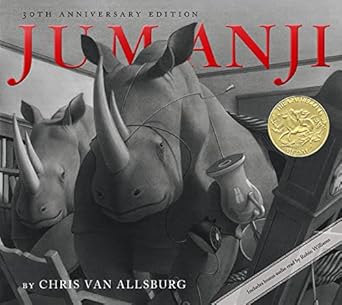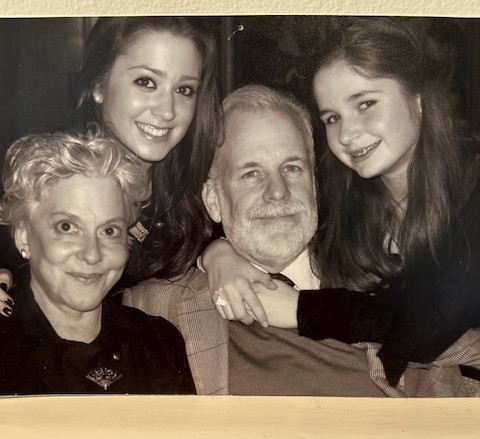Chris, Let’s start with the 2024 Rhode Island Festival of Children’s Books & Authors, being held at the Lincoln School in Providence this Friday and Saturday. You and Lisa established it many years ago and this will be your last appearance. As it has grown over the years, what has it brought audiences and authors?
Terrific authors from all over North America. Satisfied Publishers. It’s a terrifically run event with hundreds of volunteers.
We should note that many other authors including fellow Providence resident Ann Hood and Jacqueline Woodson, a Brooklyn, N.Y., resident will also be appearing. A full list is here: https://www.lincolnschool.org/student-life/rhode-island-festival-of-childrens-books-and-authors
Chris, you have written and illustrated and extraordinary number of beloved and best-selling books, all of them still in print, and a full list is here: https://www.harpercollins.com/collections/books-by-chris-van-allsburg-21819 Let’s focus on three of them, starting with The Garden of Abdul Gasazi, your first, published in 1979. It was a Caldecott Honor Award Winner. Tell us the story behind writing that book – and what you were doing at the time.

I was pursuing a career in sculpture and after a busy period preparing for a show in New York City, I decided to take a break. Also, it was winter and my sculpture studio was freezing cold. My wife, an elementary school art teacher at the time, used picture books in her classroom. She suggested, despite my rudimentary drawing skills, I might amuse myself producing a book, or at least the pictures for one. This ultimately led to the publication of The Garden of Abdul Gasazi.
The story began with a single image of a boy pursuing a dog through a topiary garden. Asking and answering questions about this picture (who is the boy? Where are he and the dog going? Whose garden are they in?) ended up revealing a story that dealt with the differences between stage magic (illusion) and genuine wizardry. It was not clear to me, or my publisher, if a story, like this, would appeal to children, but it proved to be very popular with first grade philosophers.
Now, Jumanji, first published in 1981, which also was a Caldecott winner. What was the inspiration for that? And while you’re at it, perhaps you can tell us where you get your ideas (is it magic?!).

Jumanji began with an interest in images that produced cognitive dissonance: pictures that were disorienting because of the odd combination or out of context subject matter. Imagine the newspaper photos of recklessly driven cars whose front ends are shown poking through the wallpapered wall of a neatly decorated living room. Car= normal living room= normal car+ living room= strange. So, it occurred to me, dining room= normal, rhinoceros= normal, dining room+ rhinoceros= strange.
The challenge, then, was devising a means that would produce jungle animal/ home sweet home dissonance. I settled on a board game whose perils came to life, and Jumanji became a cautionary tale about carefully reading instructions before, not after.
Finally, The Polar Express, which arguably is the most popular Christmastime children’s book of all time. Same deal – what was the inspiration?

I had a vision of a boy walking at night through a snowy woodland, dressed in pajamas and robe. He approached a train that was stopped, the windows of its few passenger cars illuminated. Steam was escaping from the giant iron locomotive, which I sensed would be leaving momentarily. But where was it going? The same question and answer process I had used writing Gasazi lead me to a coming of age story about holding onto beliefs of childhood that made the world a wondrous place.
On a related note, the Blackstone Valley Polar Express Train Ride remains a holiday staple for people in Rhode Island and nearby Massachusetts. According to its website, it is “the largest fundraiser for Blackstone Valley Tourism Council,” a non-profit organization. “Proceeds from this event go toward their Blackstone Valley Heritage Environmental Trust Fund aimed at providing environmental education opportunities for local youth in Rhode Island & nearby Massachusetts.” What role did you play in establishing it and are you involved now?
Polar Express rides started popping up a few years after the book was published. I granted permission when the organizations operating the rides were nonprofits with worthy missions. After the film was made, Warner Bros. became the owner of these rights. By that time, I had already given permission to the Blackstone Valley Tourism Council and I’m happy they are still rolling along, I have ridden a number of Polar Express trains, including the one in Blackstone Valley.
Do you ever ride along?
We certainly have, other Polar Express Rail Events as well in different parts of the country
Chris, many of your books have been adapted for movies and TV. Was this in your wildest dreams when you started writing them?
I never dreamed there might be a film adaptations of my work. Even after some success in this area, I still don’t expect a book I write will ever be anything but a story and pictures that a child will want to read over and over again. That’s enough.
Lisa, How did you meet Chris and what were you both doing at the time?
We met at the Art School while attending the University of Michigan. I was smitten by his work and by him. We moved to Rhode Island after we graduated. I was an art teacher in the Providence Schools and Chris went to grad school at RISD. I did, too.
Chris, were you interested in writing and illustrating when you were growing up?
The only artistic interest I showed growing up was my passion for building model cars, boats and planes. I was oddly careful and craftsman like for a child. It was the skill that led me to study sculpture in college.
Finally, what’s next for the Van Allsburgs?
We are best friends and love our time together, travel abroad, but mostly being with our beautiful daughters and grandchildren. It does not get better!






